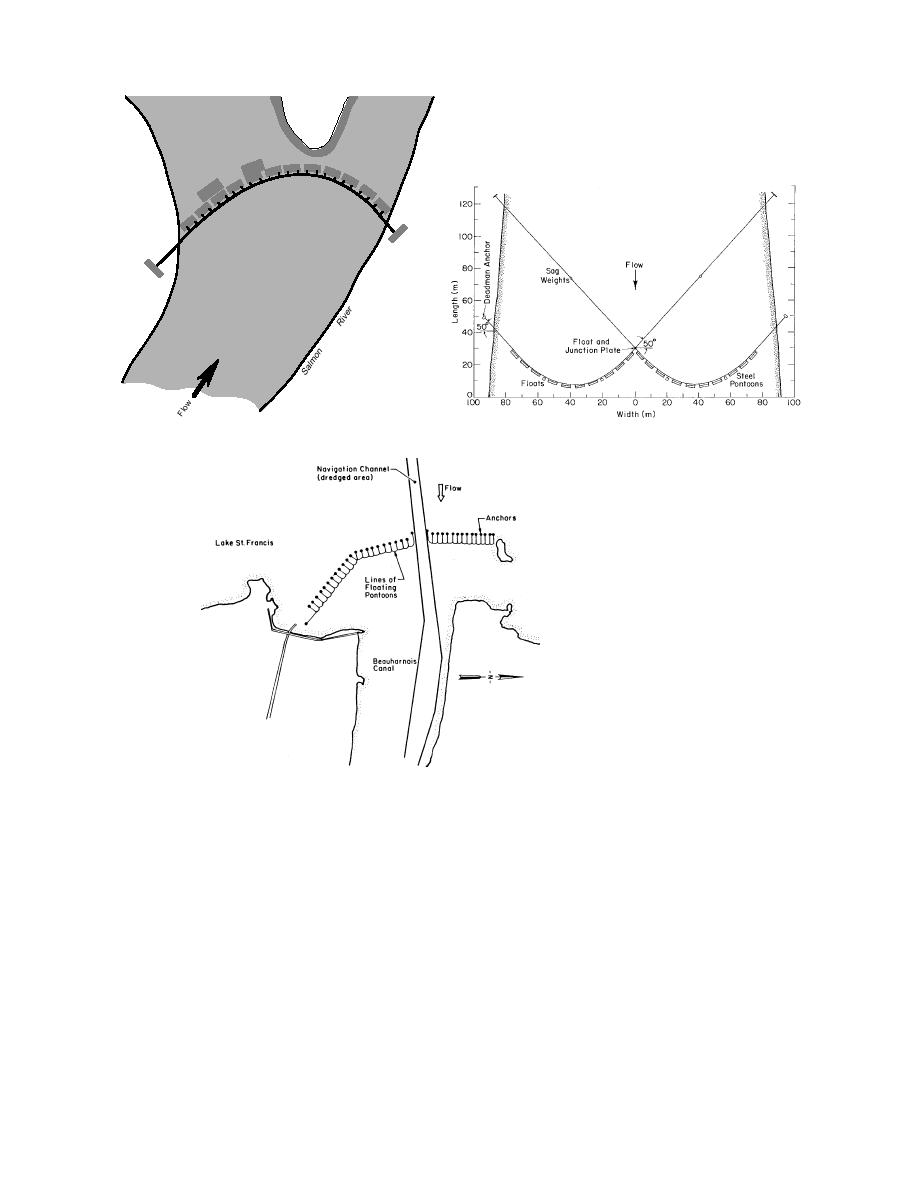
ts
Uni
om
Bo
Boom
Deadman
Cable
Anchor
a. Single-sag boom on the Salmon River.
b. Multiple-sag boom on the Allegheny River.
c. Shear boom on Lake St. Francis.
Figure 1. Ice boom designs.
duction in the process. Frazil ice forms in super-
work. To be successful an ice boom must cause an
cooled, turbulent water and is composed of fine
ice cover to progress beyond the natural change in
disc-shaped particles of ice. These small particles
water surface slope upstream of the structure. Fur-
are suspended in the full depth of the river flow
ther constraints on ice boom design include project
because they have very little buoyancy. When these
cost, benefits and environmental impact.
suspended ice particles reach a region of slower
water, they clump together to form a frazil floc,
Boom shapes
which floats along the water surface until it be-
The three ice boom shapes discussed in this
comes incorporated into a solid ice sheet. Large vol-
report are single-sag, multiple-sag and shear booms
umes of frazil can accumulate, contributing to
(Fig. 1). The purpose of a sag boom is to collect the
flooding problems. Since sag booms prevent frazil
maximum amount of floating ice and form a stable
from forming, the lower ice volume will reduce or
solid ice sheet behind the boom as quickly as pos-
eliminate spring or midwinter ice jam flooding.
sible. This ice sheet then thickens, allowing an ice
Single-sag booms are often used on small creeks
cover to progress upstream, insulating the water
and rivers because of ease of installation and low
beneath and eliminating additional frazil ice pro-
2



 Previous Page
Previous Page
